#pictland
Text
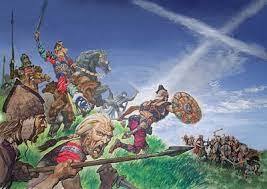

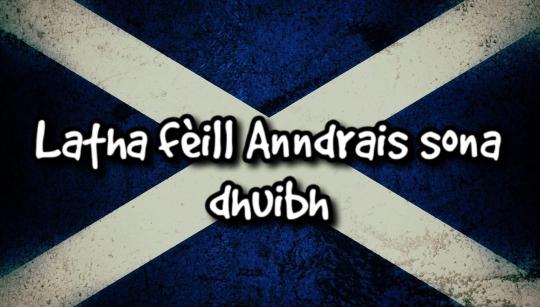
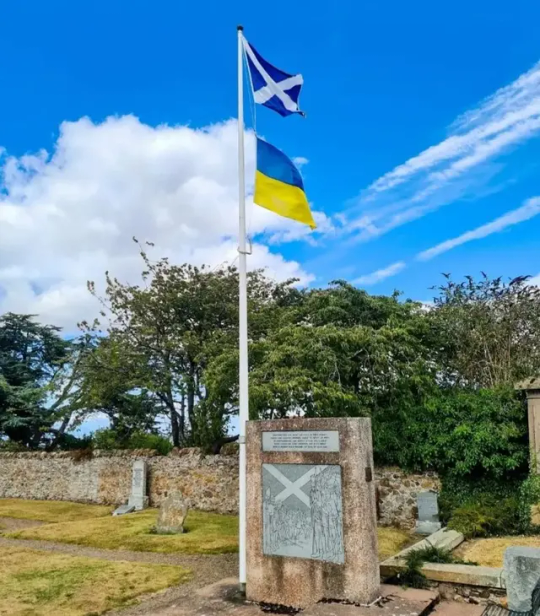

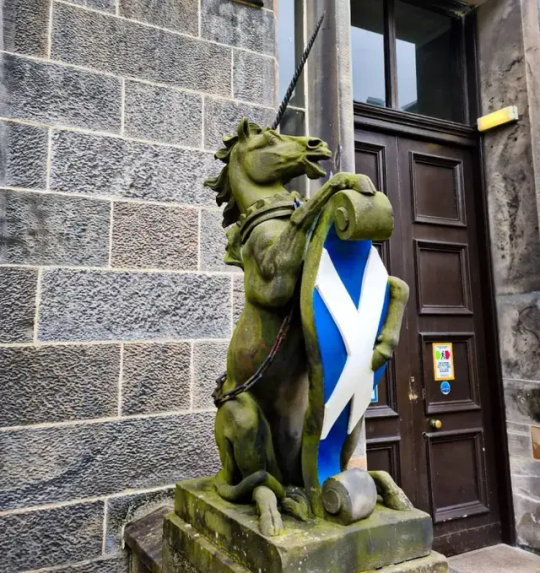
Happy St Andrews Day.
As part of our Patron Saint’s Feast Day the Scottish Saltire is proudly flown and many people add it to their posts on social media to celebrate the day, but how did Scotland adopt the saltire?
There is no actual date, or in fact nothing in our written history of the time, but legend has it that in AD 832 the king of the Picts, ‘Aengus MacFergus’, ( Anglified to Angus but some stories say Hungus) with the support of 'Scots’ from Dalriada, won a great battle against King Athelstane of the Northumbrians. The site of the legendary battle became known as Athelstaneford in present-day East Lothian.
St Andrew visited the Pictish leader in a dream before the battle and told him that victory would be won. When the battle itself was raging, a miraculous vision of the St Andrew’s Cross was seen shining in the sky, giving a boost to the morale and fighting spirit of his warriors. The result was a victory over the Saxons, and the death of Athelstan. Thus, after this victory, according to the tradition, the Saltire or St Andrew’s Cross became the flag of Scotland, and St Andrew the national patron saint.
While there is no written reference to the battle in Scotland from the period it was said to have taken place, this is not surprising, as it was a time for which we have little or no documentation for anything. The earliest written mention of the Battle of Athelstaneford in Scottish history comes from years later in the newspapers of the day, if you follow my posts then you know I dip into these “Chronicles from time to time, the first one to mention Athelstaneford is the Scotichronicon, written by the Scottish historian Walter Bower.
The Scotichronicon has been described by some Scottish historians as a valuable source of historical information, especially for the times that were recent to him or within his own memory. But he also wrote about earlier times, and this included the battle at Athelstaneford.
Bower’s account includes the scene where Aengus MacFergus is visited by St Andrew in a dream before the battle. He was told that the cross of Christ would be carried before him by an angel, there was no mention of a St Andrew’s Cross in the sky in this version. It was in later accounts, from the 16th centuries onwards, that we have the description of an image of St Andrew’s Cross shining in the sky
Bower was writing in the early 1400s. The bitter and bloody struggle to retain Scotland’s independence was not just a recent memory but also a current reality for him. Parts of Scotland were still occupied by England, and Bower had been involved in raising the money to release Scotland’s king, James I, from English captivity.
Also, Scotland’s early historical records and documents had been deliberately destroyed during the invasion by the English king Edward I. This was done in part as an attempt to remove historical evidence that Scotland had been an independent kingdom. The idea was simple: take away a nation’s history and you strip it of its identity and justification for its independent existence. The theft of the Stone of Destiny was part of this process, the Black Rood which was believed to contain a piece of the Cross Jesus was crucified on was also removed, I have covered both these in previous posts.
Part of Bower’s motivation in writing his Scotichronicon was to help restore this stolen history. He was a scholar and a man of the church. In his time, the figure of St Andrew had become a prominent presence in Scottish society.
The greatest church building in the land during his time was the Cathedral of St Andrew, which housed relics of St Andrew himself. It had taken over a hundred years to build and wasn’t formally consecrated until 1318, just four years after Bannockburn. The ceremony of course included Robert the Bruce and at it thanks was given to St Andrew for Scotland’s victory.
Less than 100 years after this, in 1413, the University of St Andrews was established and Walter Bower was one of its first students. By this time, the Cathedral of St Andrew was a place of pilgrimage, with thousands travelling there to venerate the saint’s relics. A pilgrimage route from the south took in the shrine of Our Lady at Whitekirk, not far from the site of the battle, and many pilgrims took a ferry across the Firth from North Berwick, where the ruins and remains of the old St Andrew’s Kirk can still be seen close to the Scottish Seabird Centre.
So as he sat down to write his history of earlier times, he was able to trace this connection to St Andrew, using the limited earlier written accounts, such as those of earlier Chronicler I’ve mentioned before, John Fordun, who lived in the 1300s. While Fordun doesn’t specifically mention the location of Athelstaneford, he records a battle which took place between the Picts led by Aengus and a force from the south led by Athelstan, and said the location of the battle was about two miles from Haddington. The account of St Andrew appearing in a dream to Aengus is also described by Fordun.
This creates a powerful link to the development of the written version of the story. Let’s remember Bower came from what is now East Lothian. Let us also remember that people in the early centuries stored and passed on much of their historical knowledge not in the written word but in memory and handed down oral traditions. People told stories, remembered them and told them to the next generation. Undeniably, some details would be forgotten or changed over time, but the bones of the story would be handed down. And that would include reference to locations of significant events in the local landscape.
Bower will have had access to this rich oral tradition of local stories based on handed-down collective memories of past events, which is perhaps why he was able to name the location. The later writers who added to the story of the battle will likewise have found new sources in the oral tradition to add to the narrative. Even in the 19th century, cartographers mapping the area were able to identify locations traditionally associated with the battle from local people who were custodians of ancestral memory.
This is how the story of the Battle of Athelstaneford and its connection with St Andrew and the Saltire has evolved.
The village is home to the National Flag Heritage Centre which occupies a lectern doocot built in 1583 and rebuilt in 1996. It is at the back of the village church. Today the village is surrounded by farmland and has little in the way of amenities. Tourists can follow the "Saltire Trail", a road route which passes by various local landmarks and places of historical interest.
Athelstaneford Parish Kirk has a connection with the subject of my post last week, author Nigel Tranter, who was a prominent supporter of the Scottish Flag Trust. He married in the church, and in April 2008 a permanent exhibition of his memorabilia was mounted in the north transept of the church. Items include a copy of Nigel Tranter's old typewriter, a collection of manuscripts and books, and other personal items. The display was previously at Lennoxlove House, and prior to that at Abbotsford House, the home of Sir Walter Scott.
26 notes
·
View notes
Text
*wales and cornwall permitted to elect their own prince and duke respectively
*a new pictland
*more horses on the roads than cars
*gangs of pagan chavs
*a new british gypsy king
*a return to the £sd system, but even more confusing this time
*smoking not only permitted in pubs, but mandatory
*death penalty reintroduced, but only for the most serious crimes, performed by means of wickerman on live television
this is the britain i want to achieve.
vote for me, and bribe your neighbours to do so likewise
86 notes
·
View notes
Text
Welsh Arthuriana: The Sons of Caw
A tale of King Arthur in drag, horribly unwise schadenfreude, and this big rock in the town of Ruthin
(This is an amalgamated retelling of several versions of the story from the 11th to the 16th centuries. Historical notes at the end.)

Arthur was king over the Britons in the south, and Caw the giant was king over the Picts in the north. Caw had twenty-three sons, among them the great warrior Hueil and the great writer Gildas.
Arthur, meanwhile, had almost as many lovers as Caw had sons. One day Hueil hit it off with one of Arthur's mistresses, and they snuck off to hook up. Arthur snuck up to spy on the pair, but they noticed him.
They attacked each other, and though it was a fierce fight Hueil won, stabbing Arthur in the knee. With blood spilled, tempers cooled and they all made peace. Arthur was like look, man, let's put this all behind us, I'll be mature, I won't take revenge, on one condition: Never give me shit about this. No "hey remember the time I kicked your ass", no "hey check out this guy walking funny, I wonder what happened to his leg", no nothing, okay?
For a while, there was peace, but Arthur always walked with a slight limp after that. One day he was in Ruthin in Gwynedd, dressed as a woman in order to hit on a bunch of other girls, and oh boy we do not have time to try and unpack that one here. Hueil came by and saw the ladies dancing together, and apparently Arthur passed pretty well, because Hueil only recognised him on account of the slight limp. And he knew, he knew what he had promised, but he just couldn't help himself:
"You'd be dancing all right if it wasn't for the knee!"
And lo, Arthur lost his shit, for lo, Hueil had fucked around, and now he would find out. Arthur dragged him to a big rock in the middle of town and cut his head clean off. And the rock has been called Maen Huail ever since.
When Hueil's brother Gildas heard about this, he was distraught. He took all of the books he had written in praise of Arthur, and threw them into the sea. And from that day forward, not once would the name of Arthur be found in the works of that great scribe.

So, the history
The real Gildas was a monk who probably lived in the 6th century and is our only near-contemporary source for the immediate post-Roman period in Britain. There are multiple traditions about his family, but a connection to Pictish royalty seems unlikely. This story is attempting to explain why, despite writing about the battle of Badon happening within his lifetime--supposedly Arthur's most famous victory--Gildas never mentions Arthur. The real reason is, of course, that Arthur as we know him didn't exist, and was a fictional character probably invented well after Gildas' time.
The earliest versions of the story just mention conflict between Arthur and Hueil/Huail, that usually ends in the death of the latter. Culhwch and Olwen has the person Hueil stabbed be his own nephew, and for whatever reason Arthur took a disliking to this. The idea that this explains the lack of Arthur in Gildas appears in the late 12th century, recorded by Gerald of Wales. All of these firmly locate Caw's family in "Prydyn" (Pictland/Scotland) (not to be confused with "Prydein", Britain as a whole)
Later folklore, collected by Elis Gruffydd circa 1530, localises the entire story to Gwynedd in north Wales, with Caw being a chieftan there, and this version is where the trysts and mistresses and crossdressing come from. I split the difference by keeping the Pictish origin but having Hueil just visit Wales, but I do want to clarify these are different versions in the actual medieval source material.
(Oh, also Caw being a giant might be a misreading over the years of his name as "Gawr", "big", often used as an epithet for Welsh giants)
10 notes
·
View notes
Note
Woah the thought of Merlin be jealous sound terrifying - probably a good thing that they are not possessive ? (Not me saying this with the urge to push the big shiny red button haha) More seriously, I am very Sorry and I hope that I am not be annoying, but did you know any "Arthurian" map to recommend to a newbie like me please ? In any case your game is incredible and Thank you so much to be you !
Merlin is far from sinless, but jealousy certainly isn't the vice that they're suffering from (but feel free to keep looking for the red Panic Button... not like they'd be the worst person whose buttons you could possibly push *stealthy look*)
This map is a pretty good representation of fifth-century Britannia at the time. Although I used the more common Arthurian names for some kingdoms.
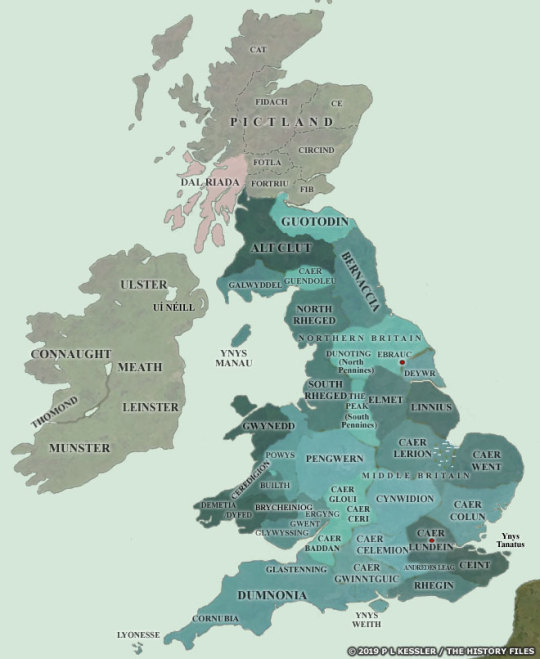
Alt Clut = Strathclyde
Guotodin/Gododdin = Lothian
Glastenning = Summer Country
Cornobia = Cornwall/Cerniw
Glywissing = Galis
The area called 'Pictland' is nominally part of Lothian in OKS, but in reality the royal family doesn't have much control over the territory. (That's about the only way Lot/Gawain being King of Lothian AND Orkney -- which are those far northern islands cut off at the top of the map -- would make any sense in lore.)
Also, see the fall of Britannia to the Anglo-Saxons (+ Jutes, Frisians etc) over the years in the maps here. I'm giving King Arthur his standard 3 generation reign, so he's king from 460-520 AD (which also just so happens to be the span of time where the Germanic invasions were curtailed).
#I really ought to post the supplementary material sometime#Like I was supposed to do a post with illustrations of the longsword fighting forms before the potential duel with Lancelot but...#Oops#House Orkney probably has a lot of Pictish blood in it too#oks-asks#oks-merlin#oks-info
17 notes
·
View notes
Note
Sorry if youve done this already, but could you make a key for human names? I'm still not sure who Helena and Jane are supposed to be 😅
Yup, I keep meaning to do so and to put it on like an about page or something.
Jack: Australia
Eliza: New Zealand
Helena: Saint Helena
Jane: Falkland Islands
Others that weren't mentioned in those posts but were mentioned recently
Caroline: nyo America (she and Alfred are mutually exclusive AUs; it's her or Alfred but not both)
Habren: Ancient Britain (Pictland, modern-day Wales and modern-day England, but not Ireland or Scotland)
Morgan: Wales
Scotland: Duncan
Erin: Ireland
I'll get to that About page when I get home >_> some names change but these have generally been pretty consistent.
10 notes
·
View notes
Text
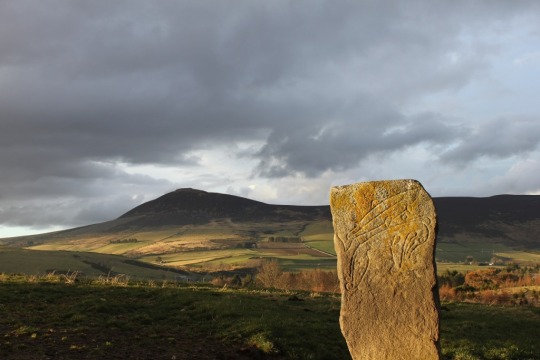
Study reveals new insights into the origins of Scotland's mysterious Picts
Scotland's Picts have long been viewed as a mysterious people with their enigmatic symbols and inscriptions, accentuated by representations of them as wild barbarians with exotic origins.
But a newly published study by an international team led by researchers at the University of Aberdeen and Liverpool John Moores University is helping to shed new light on the origins of the Picts.
The Picts were first mentioned in the late 3rd century CE as resisting the Romans and went on to form a powerful kingdom that ruled over a large part of northern Britain, in present-day north-east Scotland.
In the medieval period, the Picts were considered immigrants from Thrace (north of the Aegean Sea), Scythia (eastern Europe), or isles north of Britain but as they left few written sources of their own little is known of their origins or relations with other cultural groups living in Britain.
Archaeologists have conducted the first extensive analysis of Pictish genomes and their results have been published today (27/04/2023) in the open access journal PLOS Genetics.
The results reveal a long-standing genetic continuity in some regions of the British Isles, helping to build a picture of where the Picts came from and providing new understanding of how present-day genetic diversity formed. The findings also confirm descriptions by the great English historian Bede of the far-flung eastern origins of the Picts as one of myth and fantasy.
The researchers used Identity-By-Descent (IBD) methods to compare two high-quality Pictish genomes sequenced from individuals excavated from Pictish-era cemeteries at Lundin Links in Fife (Southern Pictland) and Balintore in Easter Ross (Northern Pictland) to those of previously published ancient genomes as well as the modern population.
Dr Linus Girdland Flink of the University of Aberdeen, senior corresponding author of the study, said: “Among the peoples present during the first millennium CE in Britain, the Picts are one of the most enigmatic.
“Their unique cultural features such as Pictish symbols and the scarcity of contemporary literary and archaeological sources resulted in many diverse hypotheses about their origin, lifestyle and culture, part of the so-called ‘Pictish problem’.
“We aimed to determine the genetic relationships between the Picts and neighbouring modern-day and ancient populations.
“Using DNA analysis, we have been able to fill a gap in an understudied area of Scotland’s past.
“Our results show that individuals from western Scotland, Wales, Northern Ireland, and Northumbria display a higher degree of Identity-By-Descent (IBD) sharing with the Pictish genomes, meaning they are genetically most similar among modern populations.”
This genetic make-up was distinct from areas of southern England where there is a greater relative degree of Anglo-Saxon heritage.
Dr Adeline Morez from Liverpool John Moores University, lead corresponding author of the study, adds: “Our findings also support the idea of regional continuity between the Late Iron Age and early medieval periods and indicates that the Picts were local to the British Isles in their origin, as their gene pool is drawn from the older Iron Age, and not from large-scale migration, from exotic locations far to the east.
“However, by comparing the samples between southern and northern Pictland we can also see that they were not one homogenous group and that there are some distinct differences, which point to patterns of migration and life-time mobility that require further study.”
The analysis of mitochondrial genomes from Lundin Links has also provided an insight into another Pictish myth – that they practised a form of matriliny, with succession and perhaps inheritance going to the sister’s son rather than directly through the male line.
“In a matrilocal system we would expect to find females staying in their birthplace after their marriage and throughout their life.
“At Lundin Links, diversity in the maternally inherited mitochondrial DNA suggests this was not the case. This finding challenges the older hypotheses that Pictish succession was passed along the mother’s side and raise further questions about our understanding of Pictish society and its organisation.”
6 notes
·
View notes
Text

Saint Drostan of Dier
Born to the Scottish royalty, the son of Cosgrach. Educated by Saint Columba. Benedictine monk. Travelled to Aberdeen, Scotland with Saint Columba. First abbot of the monastery at Dier in Pictland. Abbot of Dercongal Abbey. He evangelized the Picts, and brought Christianity to northeast Scotland. Eventually retired to live as a prayerful hermit at Glenesk. His reputation for sanctity attracted many poor and sick people, and there were many healing miracles attributed to him.
11 notes
·
View notes
Note
Hey, for the Weird Questions for Writers 3, 17 and 18 if you don’t mind?
3. What is your writing ritual and why is it cursed?
My writing ritual is cursed because:
- constantly need hot drink therefore constantly need to get up and make hot drink
- constantly need comfort food when a Scene is Hard therefore goodbye any healthy eating habits
- obsessively getting into a scene means horrid posture & eyes no longer work
- sometimes I put a little candle and try to be nice to myself but most times i’m like NO! NO SELF CARE! ONLY SUFFERING
17. Talk to me about the minutiae of your current WIP. Tell me about the lore, the history, the detail, the things that won’t make it in the text.
I really want people to understand the successive waves of invasions in the British Isles and the exact displacements of the Celtic populations there, and also that Gaelic & Brittonic Celtic cultures are two distinct cultures even if there is overlap? Like there is different history & language there? Readers don’t seem to understand this and file my characters under “Irish” or “Scottish” when I’m in an era when Brittonic-speakers still occupy the north of Britain, including Scotland (Pictland at the time), which was only just being colonised by Irish settlers. It is largely argued that the Picts were Brittonic-speakers therefore part of the Brittonic tribes of the isle of Britannia, therefore far more related to the countrymen of Wales & Cornwall than any Gaelic-speaking population. And I know there’s Scottish nationalism and stuff that would counter this argument but I’ve read the damn research and it’s there. You had the isle of Britannia which was largely Brittonic-speaking right up to the northernmost point of Pictland, and then you had Ireland which was Gaelic-speaking. And saying “Scottish” implies a Gaelic culture which is not the case in my series and it drives me up the wall aaaaaaaaahh.
It’s important because anglophones all seem to think that there is one monolithic “Celtic culture” and it’s either “IRELAND, FAIRY CIRCLES AND KILTS”, or it’s whatever the hell Shakespeare and Milton farted out that one time back in the middle ages and I’m like. “Celtic” culture is so, so rich and diverse. But people just smush that shit together, Americans are out here doing “wicca” and “ancient Celtic rituals” of Imbolc/Bealtaine/etc and I’m like, you know those rituals are Irish. In Wales you don’t do that. In Brittany you don’t do that. Gaulish Celts also had their own calendar. Please see us :’) (lol it’s fine i know it’s complicated as shit in reality to untangle what the fuck happened and who are “the Celts”, I’m only just beginning to understand the differences because i’m boobs-deep in celtic studies so, i can’t expect everyone to know the intricacies, but it’d be nice if it were more generally acknowledged when people talk about “something Celtic”, that they specify like, “Irish Celtic”, “Welsh Celtic” etc)
Also fuck all King Arthur movies ever made I just want to put it out there (except potentially that recent Green Knight one? I haven’t seen it yet but the Mabinogion-like madness looks great. Just gotta wince inside every time they set Arthur in MASSIVE GOTHIC ARCHES and HUMUNGOUS 12TH+ CENTURY CASTLES like. If he lived at all it was way before the 10th century you guys. But OK hollywood you really can’t pluck him out of those historically inaccurate castles/cathedrals, you just can’t bothered to get a history consultant, i get it, FINE)
18. Choose a passage from your writing. Tell me about the backstory of this moment. How you came up with it, how it changed from start to end. Spicy addition: Questioner provides the passage.
So!! I write Viking-era historical fantasy, and I incorporate old Norse magic in this tome of my series. And previously I did NO research (or, really not enough) into the actual historical Norse “magic system” if you can call it that. But in the Poetic Edda you really get a great description of what exists in Norse “spellcrafting”. So I’ve got like a bulletpoint list of the magic system now lol which has helped so much with vocab & imagining how the spells are actually cast.
So, context: one character is in a coma, protags turn to spellcrafting to go and “fetch his mind” from the realm where he’s lost himself. At first I just had my characters sort of go “to high ground” with some “seidr-workers” to perform a chant. This was wrong, because seidr is exclusively divination & “vengeance-seeking”, and is a female craft (if men do it it’s like a huge stain to your character). The “regular magical lore” that everyone can learn is called “fjölkyngi” and there is one such act that is called “spirit-wandering” where your mind basically travels around without your body. So, since my protags are accompanied by sorceresses, I changed the term “seidr-worker” to “Völva” (which I’m unsure about but at least we’re departing from seidr), and the protags actually go out in the realms in the final draft (aka they drink a potion & have a huge shared hallucination lol), whereas in the previous draft they sort of sang and that was it.
The first sign of departure is a squirm in the stomach, as though something were swimming in there. It’s those invisible hands again, shuffling through my insides, like fat fingers in a dice cup trying to fish out the die. My bow slips from my grasp. I bend to retrieve it, and the world bends around me.
Oh… yes, this was how it went. I breathe in and I know that when I breathe out, I will lose my mind; it will fly out like shreds in the wind. I need – need it to be a controlled exit. Controlled.
I glance around to Tamsin. I have to turn my head around so far until I see her, like an owl making the whole rotation. She’s deep in concentration, her hand beating the rhythm by itself; but her body is going limp. She falls slowly, gracefully to her knees beside me, still banging that stick at her wide drum. I know how that feels, how keeping the rhythm is as instinctive as breathing now – thrum, thrum, goes the ceaseless heart.
Tamsin. Tamsin. I need to stay with her. Stay – stay with her. My tagelharpa slides from my lap onto the ground, and I reach out – there’s so much air between us somehow, my arm stretching into it, a brave traveler disappearing into mist. She beats, and beats, and beats the drum, unfocused eyes skating over my palm.
“Tamsin,” I slur. “Ta… come. Take… my hand, take…”
“I don’t,” come the sounds from her drooping mouth, “I don’t feel so good.”
The stick slips, the drum thrums over the ground. Her palm is warm against mine, a downward motion; a slap that weighs like a stone. And then our joint hands are falling, and we are falling after them. The rocky ground underneath us turns to grey water, gulping us under. A leg, a hip, a curl of ginger hair.
We fall.
Everything rushes past us like wind. Whether it be solid ground or open sky; we are as ghosts passing through. Her hand is in mine, golden threads wrapped around our wrists glowing like hunter’s tokens in the woods, showing the way back.
Blue, deep and royal, opens like a yawning mouth around us. I pull her closer until we’re locked in an embrace; perhaps merged, or perhaps we were always one.
I open my eyes, strain my eyelids.
Where is this… where are we?
Voices flutter on the air around us. A host of crackly elder tones, of wrinkled hands drumming, drumming.
Point the direction, son of Ula.
#writing tracker#sorry i took so long to answer this i knew it'd be a long one lol#i chipped away at it ahah#convos#just#neopaganism seems to have popularised and made accessible some shit that then gets labeled 'celtic'#AND IT GETS IN THE WAY OF THE HISTORICAL RESEARCH SO MUCH#because there are SO MANY shitty not-historically-based books out there as a result#same for norse stuff#norse & celtic culture in general just suffer from people wanting 'the vibe' without really diving deeper into the historical texts#and i guess i get pissed off because i have like this cultural dissonance of like 'is this my culture or is this an irish thing again' lol#why settle for shit like wicca when you could learn what people from specific localities actually did#and it's 100% more interesting and whackier than wicca#all these neopagan books be like 'hello i'm the author and i'm going to smack down a bunch of reference-less knowledge'#'i expect you to take me at my word' excuse me but who the fuck are you anyway#when i read the Holy Book of Women's Mysteries i was like WHAT ARE YOU DOINGGG#why are you making shit up#isn't it more interesting to link it to history??? why take historical shit and warp it like that and lace it with your own brainfarts
7 notes
·
View notes
Text
Into Pictland

View On WordPress
0 notes
Text
North Sea Scotland (6): In Pictland

The Picts are Europe's noble savage.
Proud, fierce and independent, they are easy to admire, and chief among the admirers were their enemies. Tacitus, so-in-law of a Roman general who fought them, commended them for defending the world's "last inch of liberty".
The Picts could never be subdued, only wiped out. Their disappearance from the record around the 10th century adds to their mystique.
They had no writing but did not leave without a trace. About 200 carved stones remain dotted around the Picts' heartland.
A clutch of them are on display at a great little museum just north of Dundee, the Meigle Sculpture Stone Museum. They are not just stunning works of art: they bear testimony to a tragic history.

But before turning to those slabs, I'll go through a few things we know about the Picts from other sources. As mentioned in my previous post, they were a Brittonic people. Britons, by the way, are Celts who lived on the island of Britain during the Iron Age and are distinct from Gaelic Celts from Ireland.
While the Romans conquered most of Britain, Picts and other Brittonic holdouts kept them out of "Caledonia". The Anglo-Saxons who replaced the Romans also stayed south of the border – initially at least – to focus on fighting each other.
Meanwhile the Picts prospered. By the fifth century, their kingdom stretched from the top of Scotland to the Firth of Forth, the inlet just north of Edinburgh.
At a time when Anglo-Saxons and Gaelic Scots were fragmented into warring chiefdoms and clans, Pictland remained united (apart from a temporary north-south split following the introduction of Christianity).
So what was the secret of the Picts' success? I found a convincing explanation in Jamie Jeffers' engagingly erudite British History Podcast: matrilineal succession.
The rule around Europe then - and until the 20th century - was that first-born sons inherited the crown. The system might not yield the best person for the job but it had the virtue of simplicity: if a) your dad is king and b) you've got a penis but no older sibling who does, then you're next in line. End of.
The Picts had different approach. Tribal chiefs got together and settled successions through consensus, a process that was better at weeding out obvious inadequates than accident of birth.
And crucially, they chose among candidates who could trace their royal ancestry through the female line. As Jeffers notes, this prevented disputes: if the male carries the magic blood, there is always a possibility that his partner could carry another man's child and the throne loses its magic; if it's the woman who carries the magic blood, then you know that her offspring carries it as well.
Princesses, in other words, had quasi-mystical pulling power among Pictish nobles, a unifying feature reinforced by the deliberative selection system. To Jeffers' analysis, I would add the hypothesis that any increase in the status of women - even limited to royals - contributes to the cohesiveness, stability and sophistication of a society. Just look at today's Denmark vs the Tabilan's Afghanistan.
This brings me back to the Meigle museum, where the high degree of Pictish civilisation is on display.
The stones tell us about the beliefs of a deeply pious people.

Among the distinctive symbols and patterns are representations of fabulous creatures, including a lion with a man's head and dancing sea-horses (above).
The Picts were also fond of domestic animals.
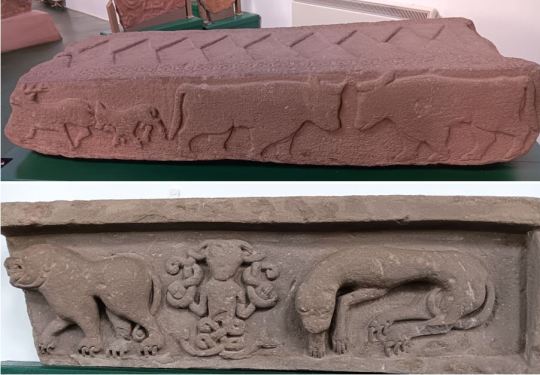
The menageries above feature horses, stags, cattle as well as the manticore, a monster of middle-eastern origin with the tail of a scorpion. Clearly the Picts were aware of distant lands.
Several stones combine pagan and Christian symbols, illustrating how the new religion was assimilated into ancient beliefs. They show crosses superimposed on representations of animals. Note the seahorses again and the cat on the bottom left!

I couldn't help but see those stones as expressions of unity. As mentioned, northern Picts were slower than southerners in adopting Christianity. The carvings seem to say: whatever our beliefs, we are one nation.
The last of the stones date from about 850 AD. No trace of a Pictish civilisation remains beyond 900. This raises the question: if the Picts were so sophisticated, why did they vanish? Well, the superior nature of a civilisation does not a guarantee survival.
In the end, the Picts had too many enemies: Gaelic Scots to the west, Brittonic rivals to the south-west and increasingly assertive Anglo-Saxons in the south. For a while, the Picts dealt with these threats by a combination of force and bridal diplomacy. Pictish princesses married potential foes.
In the ninth century, Viking invasions forced the Picts to get closer to the Scots. This political shift led to Gaelic symbols appearing on Pictish stones.
In 843, Kenneth MacAlpin absorbed Pictland into his Scottish kingdom. The fact that his mother was Pictish helped the junior partner accept the takeover. But it spelled the end for their nation.
The Picts themselves, it appears, understood the limits of bridalism as a foreign-policy tool.
One of the more intriguing stones shows a human figure set upon by animals (below). Museum curators say she could be Guinevere, the wife of King Arthur.
The Welsh legend was adopted by the Picts. In their version Guinevere was a Pictish princess, known locally as Vanora, whose marriage to Arthur highlighted Brittonic unity against the Anglo-Saxons.
But the alliance did not work out: Vanora, as the carvings show, was fed to ravenous beasts by her jealous husband.

0 notes
Text


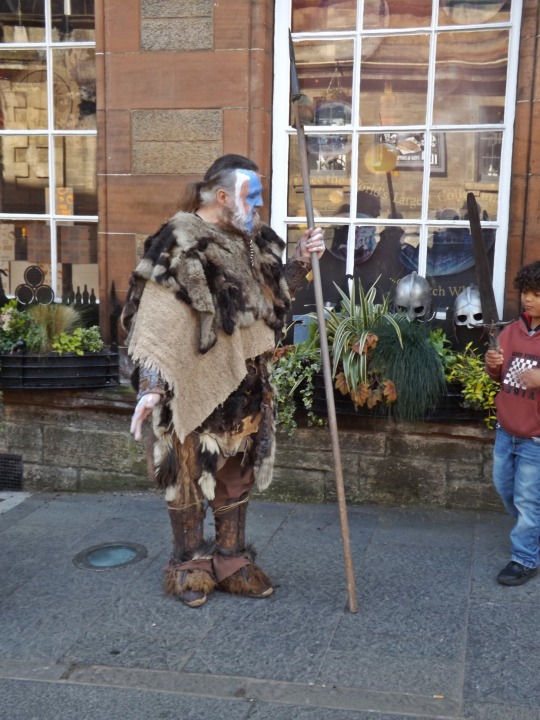

Fergus King of the Pcts.
Adam Watters entertaining tourists on Castle Hill last week
20 notes
·
View notes
Text
the first step was devolution,
the second step should be to allow wales and cornwall to elect their own prince and duke (respectively)
the crowns of scotland and england should remain united (for the time being)
a new pictland forms secretly from disparate peoples.
ireland is fully united and granted its own sovereign crown
scotland gains independence, and the crown of the UK is divided
yorkshire and northumberland join scotland. liverpool joins wales
london is sold to the french, in exchange for brittany
at this point arthur will return and bring peace.
3 notes
·
View notes
Text
The Battle of Dun Nechtain - the Picts Crush the Northumbrian Saxons

On May 20 in 685 AD a decisive battle was fought between the Picts of Caledonia and the Northumbrian Saxons at Dun Nechtain near the lake of Linn Garan, a disputed location somewhere in what is today Scotland.
During the seventh century AD, the Northumbrians gradually extended their territory to the north. The Annals of Tigernach record a siege of "Etain" in 638, which has been interpreted as Northumbria's conquest of Eidyn (Edinburgh) during the reign of Oswald, marking the annexation of Gododdin territories to the south of the River Forth.
To the north of the Forth, the Pictish nations consisted at this time of the Kingdom of Fortriu to the north of the Mounth, and a "Southern Pictish Zone" between there and the Forth. Evidence from the eighth century Anglo-Saxon historian Bede points to the Picts also being subjugated by the Northumbrians during Oswald's reign, and suggests that this subjugation continued into the reign of his successor, Oswiu.
Ecgfrith succeeded Oswiu as king of Northumbria in 670. Soon after, the Picts rose in rebellion against Northumbrian subjugation at the Battle of Two Rivers. Ecgfrith was aided by a sub-king, Beornhæth, who may have been a leader of the Southern Picts, and the rebellion ended in disaster for the Northern Picts of Fortriu. Their king, Drest mac Donuel, was deposed and was replaced by Bridei mac Bili.
By 679, the Northumbrian hegemony was beginning to fall apart. The Irish annals record a Mercian victory over Ecgfrith at which Ecgfrith's brother, Ælfwine of Deira, was killed. Sieges were recorded at Dunnottar, in the northern-most region of the "Southern Pictish Zone" near Stonehaven in 680, and at Dundurn in Strathearn in 682. The antagonists in these sieges are not recorded, but the most reasonable interpretation is thought to be that Bridei's forces were the assailants.
The attacks on the Southern Pictish Zone at Dunnottar and Dundurn represented a major threat to Ecgfrith's suzerainty. Ecgfrith was contending with other challenges to his overlordship. In June 684, countering a Gaelic-Briton alliance, he sent his armies, led by Berhtred, son of Beornhæth, to Brega in Ireland. Ecgfrith's force decimated the local population and destroyed many churches, actions which are treated with scorn by Bede.
While none of the historical sources explicitly state Ecgfrith's reason for attacking Fortriu in 685, the consensus is that it was to reassert Northumbria's hegemony over the Picts. The most thorough description of the battle is given by Bede in his 8th-century work Historia ecclesiastica gentis Anglorum (The Ecclesiastical History of the English People), but this is still brief. Additional detail is given in the Irish annals of Ulster and Tigernach, and by the early Welsh historian Nennius in his Historia Brittonum (written around a century later).
Ecgfrith's attack on Fortriu was made against the counsel of his advisors, including Cuthbert, who had recently been made Bishop of Lindisfarne. The Picts, led by Bridei, feigned retreat and drew Ecgfrith's Northumbrian force into an ambush on Saturday, 20 May 685 at a lake in mountains near Duin Nechtain. The Northumbrian army was defeated and Ecgfrith slain.
Ecgfrith's defeat at Dun Nechtain devastated Northumbria's power and influence in the north of Britain. Bede recounts that the Picts recovered their lands that had been held by the Northumbrians and Dál Riatan Scots. He goes on to tell how the Northumbrians who did not flee the Pictish territory were killed or enslaved.
The Northumbrian/Roman diocese of the Picts was abandoned, with Trumwine and his monks fleeing to Whitby, stalling Roman Catholic expansion in Scotland.
While further battles between the Northumbrians and Picts are recorded, for example in 697 when Beornhæth's son Berhtred was killed, the battle marks the point in which Pictish independence from Northumbria was permanently secured.
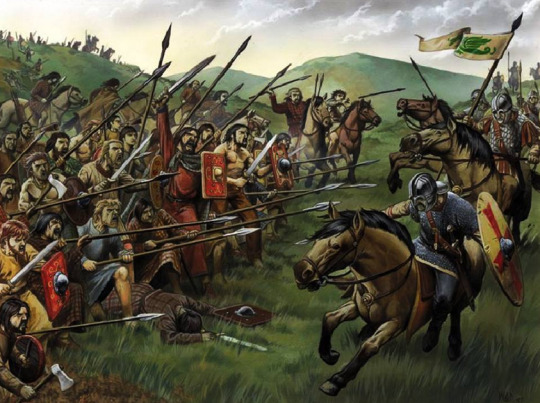
#scotland#scottish#Scottish history#picts#pictland#caledonia#7th century#dark ages#history#military history#saxon#saxons
107 notes
·
View notes
Link
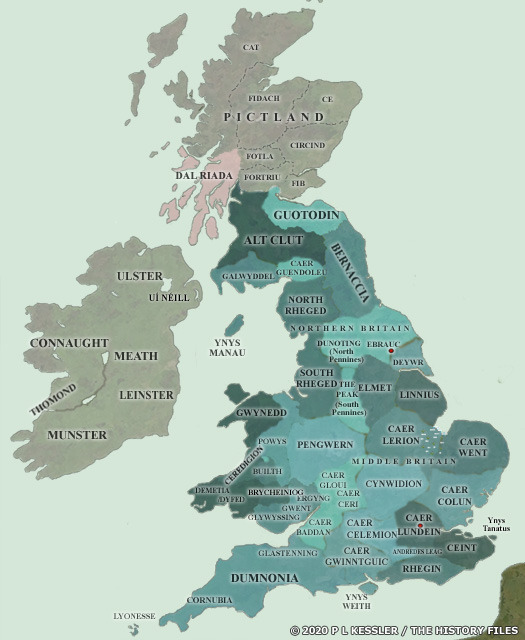
It would appear to have been the Yellow Plague of AD 549-552 which fractured Pictland into two clearly-definable kingdoms based around a north-south divide, although the north remained dominant.
2 notes
·
View notes